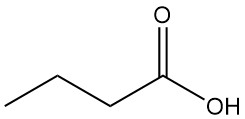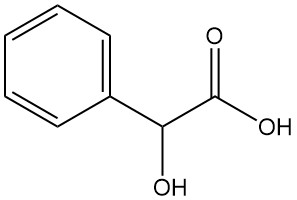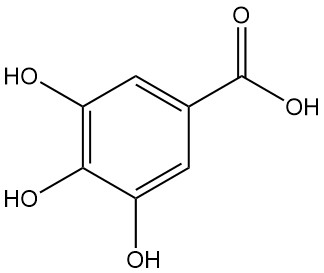
4-hydroxybenzoic acid, also known as para-hydroxybenzoic acid, is an aromatic organic acid with the chemical formula C7H6O3. It is a white or colorless solid that is soluble in water, ethanol, and other polar solvents.
4-hydroxybenzoic acid is found naturally in some plants and fruits, such as berries, apples, and plums. It is also produced synthetically for use in a variety of industrial and commercial applications.
Table of Contents
1. Physical Properties of 4-Hydroxybenzoic acid
The physical properties of 4-Hydroxybenzoic acid are summarized in the following table:
| Property | Value |
|---|---|
| Chemical formula | C7H6O3 |
| Molar mass | 138.12 g/mol |
| Physical appearance | White, granular crystalline powder |
| Melting point | 216.3 °C |
| Boiling point | 298 °C |
| Density | 1.497 g/cm³ at 20 °C |
| Dissociation constants | K1 = 3.3 × 10⁻⁵, K2 = 4.8 × 10⁻¹⁰ at 19 °C |
| Solubility in water | 0.49 g in 100 g of solution at 20 °C, and 33.5 g in 100 g of solution at 100 °C |
| Solubility in 99% ethanol | 38.75 g at 67 °C |
| Solubility in n-butanol | 19.5 g at 32.5 °C |
| Solubility in chloroform | Sparingly soluble |
2. Chemical Reactions of 4-hydroxybenzoic acid
4-hydroxybenzoic acid is a versatile organic acid that can undergo a variety of chemical reactions. Due to its presence of both a hydroxyl (-OH) and a carboxyl (-COOH) group, it can participate in reactions involving both the aromatic ring and the functional groups.
4-hydroxybenzoic acid decarboxylates at temperatures above 200 °C, forming phenol and carbon dioxide.

It is also susceptible to electrophilic substitution reactions, such as nitration, sulfonation, or halogenation, which primarily occur at the ortho position relative to the hydroxyl group.
Interestingly, it does not exhibit a color reaction with iron(III) chloride, but instead forms a yellow precipitate.
One of the most common chemical reactions of 4-hydroxybenzoic acid is esterification. In this reaction, 4-hydroxybenzoic acid is reacted with an alcohol in the presence of an acid catalyst to form a 4-hydroxybenzoate ester. 4-hydroxybenzoate esters are commonly used as preservatives in food, cosmetics, and pharmaceuticals.
For example, the reaction of 4-hydroxybenzoic acid with methanol in the presence of sulfuric acid produces the ester methyl 4-hydroxybenzoate (methylparaben):

4-hydroxybenzoic acid can also undergo salt formation when reacted with a base to form a 4-hydroxybenzoate salt.
3. Production of 4-hydroxybenzoic acid
4-hydroxybenzoic acid is produced synthetically from phenol and carbon dioxide, or biosynthetically from renewable feedstocks such as glucose and L-tyrosine.
There are five main methods for producing 4-hydroxybenzoic acid:
3.1. Carboxylation of Potassium Phenolate
This method involves reacting potassium phenolate with carbon dioxide at high temperature and pressure to produce 4-hydroxybenzoic acid, partly in the form of the dipotassium salt. The yield is 80% and the conversion of phenolate is approximately 60%.

3.2. Isomerization of Dipotassium Salicylate
This method involves heating dipotassium salicylate under slightly elevated carbon dioxide pressure to convert it to 4-hydroxybenzoic acid. This method is more energy-efficient than the carboxylation of potassium phenolate method, but it produces a lower yield of 4-hydroxybenzoic acid.
3.3. Oxidation of Alkali-Metal Salt of p-Cresol
This method involves oxidizing the alkali-metal salt of p-cresol at high temperature on metal oxides to produce 4-hydroxybenzoic acid, along with other products. This method is less commonly used than the other methods because it is more complex and produces a lower yield of 4-hydroxybenzoic acid.
3.4. Reaction with Phenol and Tetrachloromethane
This method involves reacting phenol with tetrachloromethane in the presence of alkali to produce a mixture of salicylic acid and 4-hydroxybenzoic acid, with salicylic acid being the primary product. This method is also less commonly used than the other methods because it produces a lower yield of 4-hydroxybenzoic acid and generates hazardous waste products.

3.5. Biosynthesis from Renewable Feedstocks
In recent years, there has been growing interest in developing more sustainable methods for producing 4-hydroxybenzoic acid. One promising approach is to use genetically modified microorganisms to convert renewable feedstocks such as glucose and L-tyrosine into 4-hydroxybenzoic acid.
For example, researchers have developed strains of E. coli that can produce 4-hydroxybenzoic acid from glucose. In this process, the glucose is first converted to pyruvate, which is then converted to 4-hydroxyphenylpyruvate. 4-hydroxyphenylpyruvate is then decarboxylated to produce 4-hydroxybenzoic acid.
Another promising approach is to use L-tyrosine as a precursor for 4-hydroxybenzoic acid production. L-tyrosine is a non-essential amino acid that can be produced from renewable feedstocks such as sugarcane and corn. In this process, L-tyrosine is first converted to 4-hydroxyphenylpyruvate, which is then decarboxylated to produce 4-hydroxybenzoic acid.
The biosynthesis of 4-hydroxybenzoic acid from renewable feedstocks is still in the early stages of development, but it has the potential to be a more sustainable and environmentally friendly alternative to the traditional Kolbe-Schmitt reaction.
4. Uses of 4-Hydroxybenzoic acid and it esters
4.1. Uses of 4-hydroxybenzoic acid
4-hydroxybenzoic acid is a versatile compound with a wide range of applications in various industries.
- 4-hydroxybenzoic acid is used as an intermediate in the production of dyes, pharmaceuticals, pesticides, and plastics.
- Emulsifier: 4-hydroxybenzoic acid is used as an emulsifier to mix oil and water-based components in products like cosmetics and food preparations.
- Corrosion protection agent: 4-hydroxybenzoic acid is used to protect materials from corrosion.
- Antimicrobial agent: 4-hydroxybenzoic acid esters and sodium salts have antimicrobial properties and are used as food preservatives, especially in weakly acidic to weakly basic conditions. They are also used in food and beverage preservation, cosmetics, pharmaceuticals, and technical products.
- Polymer applications: 4-hydroxybenzoic acid is used in the manufacturing of polyester and liquid crystal polymers.
- Pharmaceuticals: 4-hydroxybenzoic acid is used in the production of some pharmaceuticals, such as aspirin and paracetamol. It is also used as a topical antiseptic.
- Plant growth: 4-hydroxybenzoic acid can be used to promote plant growth and development.
- Environmental remediation: 4-hydroxybenzoic acid can be used to remove heavy metals and other pollutants from the environment.
4.2. Uses of 4-hydroxybenzoic acid esters
- PHB-ester: PHB-ester, a mixture of the ethyl and n-propyl esters of 4-hydroxybenzoic acid, is used as a food preservative. It is permitted in the preservation of foodstuffs in various countries and is identified as E 214 – E 219 in Europe and under different names in the United States. A mixture of 60% ethyl and 40% propyl ester is particularly effective, but its use in certain food products may be restricted by law, such as in wine.
- Termite control: Some higher esters derived from 4-hydroxybenzoic acid are used in termite control.
- Emulsions: 4-hydroxybenzoic acid esters, such as PHB-benzyl ester, can form eutectic mixtures that remain liquid at room temperature. These mixtures are used in oil-in-water emulsions.
- Color developers: PHB-benzyl ester and other esters of 4-hydroxybenzoic acid are used as color developers in pressure-sensitive and thermosensitive writing systems. These esters are purified and decolorized by distillation with the addition of sodium hydrogen sulfite during the manufacturing process.
5. Toxicology of 4-hydroxybenzoic acid
4-hydroxybenzoic acid is more toxic when injected into the abdomen than when swallowed or injected under the skin. This is because it is absorbed into the bloodstream more quickly when injected into the abdomen.
- ral LD50 in Mice: 2200 mg/kg
- Intraperitoneal (i.p.) LD50 in Mice: 210 mg/kg
- Subcutaneous (s.c.) LD50 in Mice: 1050 mg/kg
4-hydroxybenzoic acid is also classified as a drug and a mutagen, meaning it can cause genetic mutations.
4-hydroxybenzoic acid can cause skin and eye irritation. Contact with the skin can cause redness, itching, and burning. Contact with the eyes can cause redness, pain, and tearing.
4-hydroxybenzoic acid can cause allergic reactions in some people.
4-hydroxybenzoic acid is toxic to fish and other aquatic life. Exposure to 4-hydroxybenzoic acid can cause death in fish and other aquatic organisms.
References
- Hydroxycarboxylic Acids, Aromatic; Ullmann’s Encyclopedia of Industrial Chemistry. – https://onlinelibrary.wiley.com/doi/10.1002/14356007.a13_519
- Production of 4-Hydroxybenzoic Acid by an Aerobic Growth-Arrested Bioprocess Using Metabolically Engineered Corynebacterium glutamicu
- Method for preparing p-hydroxybenzoic acid. – https://patents.google.com/patent/US3532745A/en




